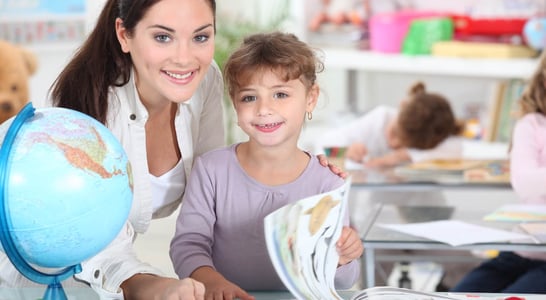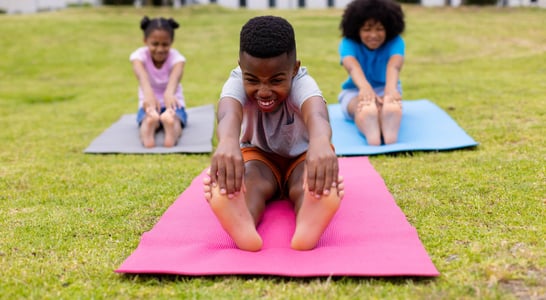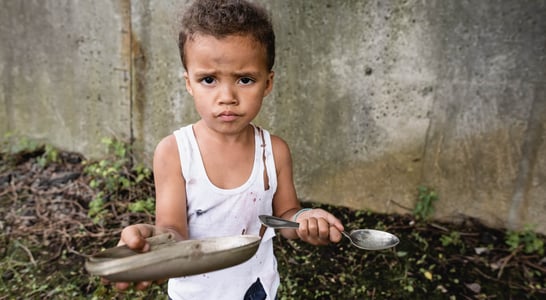
Stand For Children Day
Stand For Children Day, observed annually, is a call to action for society to prioritize the well-being and rights of children.
Advocates, parents, educators, and organizations unite on this day to raise awareness about the importance of nurturing the next generation!
How to Celebrate Stand For Children Day
Become an Advocate for Kids
Becoming an advocate for children is a great way to celebrate Stand For Children Day. You could pen a letter to a local representative or start a petition to get more funding for schools.
It doesn’t take a lot to speak up for those who need a voice!
Throw a Fundraiser Fiesta
Throwing a fundraiser to benefit children’s charities can be a fun way to make a positive impact. Organize a bake sale, host a trivia night, or plan a talent show—anything that raises money for kids. You’ll have fun, raise money, and inspire others to care about the cause.
Volunteer Your Time
Lending a helping hand is one of the most rewarding ways to celebrate Stand For Children Day. Whether you volunteer at a local school, tutor a child, or help out at a youth center, your time can make a big difference. Plus, it’s an awesome opportunity to meet new people and learn new skills!
Organize a Book Drive
A book drive can help get more books into the hands of children who need them. Reach out to your community to collect gently used or new books for local libraries or schools. It’s a simple yet meaningful way to share the joy of reading.
Plan an Educational Event
Hosting an educational event is a great way to spread awareness about children’s issues. Plan a workshop, invite a guest speaker, or screen a documentary on education or child welfare. It’s an engaging way to get people talking and thinking about how they can help.
Why Celebrate Stand for Children Day
Stand for Children Day asks individuals, organizations, and communities to stand in solidarity, emphasizing the shared responsibility to uplift kids everywhere.
The celebration aims to focus attention on the significant issues facing today’s youth, such as education, health care, and safety. It encourages a deeper commitment to addressing inequalities and barriers that prevent children from reaching their full potential.
By highlighting these challenges, Stand For Children Day serves as a rallying cry to demand policies and practices that benefit our society’s youngest members. Recognizing Stand For Children Day offers everyone an opportunity to reflect on the importance of investing in children.
Beyond just raising awareness, the day inspires collective action—whether through advocacy, policy change, or community support. Together, we can build a world where every child has access to quality education, health services, and a safe environment.
History of Stand For Children Day
Stand For Children Day began as a passionate movement to advocate for the well-being and rights of children.
On June 1, 1996, a non-profit named Stand for Children organized a significant rally in Washington, D.C. It drew tens of thousands of people together with a singular focus: to highlight the challenges faced by young people and to push for substantial change.
The organizers sought to motivate both citizens and leaders to take decisive action on behalf of children. Children often struggle to have their voices heard in policy discussions. The movement emphasized the importance of prioritizing education, healthcare, and safety for all children, which has remained central to Stand For Children Day’s mission.
The day grew in influence over the years, raising awareness about issues affecting youth and underscoring the necessity of meaningful support systems. Its continued relevance lies in its advocacy for a future where every child, no matter their background, has the opportunity to thrive.
Since its inception, Stand For Children Day has successfully united communities across the nation. It encourages people to stand up for young individuals, pushing for better resources and support. The celebration has since expanded its influence, representing a commitment to ensuring every child gets the chance to grow in a supportive environment.
By bringing attention to the needs of children, the movement seeks to inspire collective action that can lead to lasting improvements in the lives of kids everywhere.
Stand For Children Day FAQs
What was unique about the Stand for Children rally in 1996?
The 1996 rally at the Lincoln Memorial was the largest demonstration in U.S. history dedicated to children’s rights.
Rosa Parks addressed over 300,000 attendees, urging action for children’s well-being. The event inspired long-term advocacy movements across the country.
Did Stand for Children Day spark any unexpected traditions?
In some communities, supporters stand in silence for hours to symbolize solidarity with children who face hardships.
Others host “children’s wish trees,” where people write pledges to improve kids’ lives. These traditions add personal meaning to the day.
Why do some people mistakenly think Stand for Children Day is global?
Though it began in the U.S., the values it promotes resonate universally.
Advocacy movements in other countries, like Canada and Brazil, have adopted similar goals. The day’s themes of education and safety for children transcend borders.
What unique symbols or themes represent Stand for Children Day?
Supporters often wear blue to symbolize trust, responsibility, and hope for children’s futures. Some events feature handprint banners, where children and adults leave painted imprints to show collective commitment to advocacy.
Are there fun or quirky ways people celebrate this day?
Some neighborhoods organize “kids’ choice days,” where children lead the planning of community events.
Others hold toy or book swaps to promote sharing and learning. These playful celebrations make the day memorable and inclusive.
Has Stand for Children Day influenced the arts?
Yes, artists often create murals or public art focused on children’s experiences.
Poetry slams and storytelling sessions highlight the voices of young people. These creative expressions bring the day’s themes to life in inspiring ways.
What are some lesser-known successes linked to this movement?
Beyond policy wins, Stand for Children campaigns have strengthened community ties.
In Oregon, advocacy efforts helped improve school counseling programs, boosting emotional support for thousands of students.
How can teachers incorporate Stand for Children Day into the classroom?
Teachers use the day to discuss children’s rights and advocacy. Activities include mock city councils where students debate solutions to kids’ issues. This approach encourages civic engagement from a young age.
What unusual myths exist about Stand for Children Day?
One myth claims the day focuses only on education, but it tackles broader topics like health, safety, and emotional well-being.
Another suggests it is politically aligned, though the focus is nonpartisan and child-centered.
Are there historical figures besides Rosa Parks tied to its origins?
Yes, Marian Wright Edelman, a key organizer of the 1996 rally, was pivotal in shaping the event.
Her leadership in the Children’s Defense Fund continues to inspire related movements nationwide.
Also on ...
View all holidaysWorld Milk Day
Start your day with a glass of calcium-rich milk, visit a local dairy farm, or see what milk alternatives like soy, oat, or almond milk you might enjoy.
National Go Barefoot Day
Put your feet in direct contact with the Earth by going barefoot, or donate any shoes you don’t wear to those who have no choice but to go barefoot.
Dinosaur Day
Discover a lost world of colossal creatures, where gigantic predators and gentle giants once roamed the earth.
World Reef Awareness Day
Join the reef revolution and become a hero for our ocean friends! By spreading awareness and taking action, we can protect these colorful communities and ensure they thrive for generations to come.
We think you may also like...
National School Social Work Week
With compassion and expertise, school social workers provide invaluable support in navigating academic, personal, and social challenges.
Children’s Mental Health Week
Nurturing the minds of the youngest among us, fostering well-being and emotional strength, ensures a brighter future for our children.








